Exhibited in 2017, (Re)Flex Space brought together artists responding to November 2016’s elections, the crackdown of U.S. boarders, and the swell of marginalized populations feeling unheard. Participating artists took turns occupying the space through a series of performances, installations and workshops, allowing each artist to build upon the remnants of the preceding work. Artists engaged one another through the accumulation of materials to generate an organic, collaborative reaction to the political climate of the moment. (Re)Flex Space held diverse gestures—ranging from protest and cathartic release to introspection and sharing knowledge—as equally significant modes of processing the contemporary moment and unpacking the social and political responsibilities of art making.

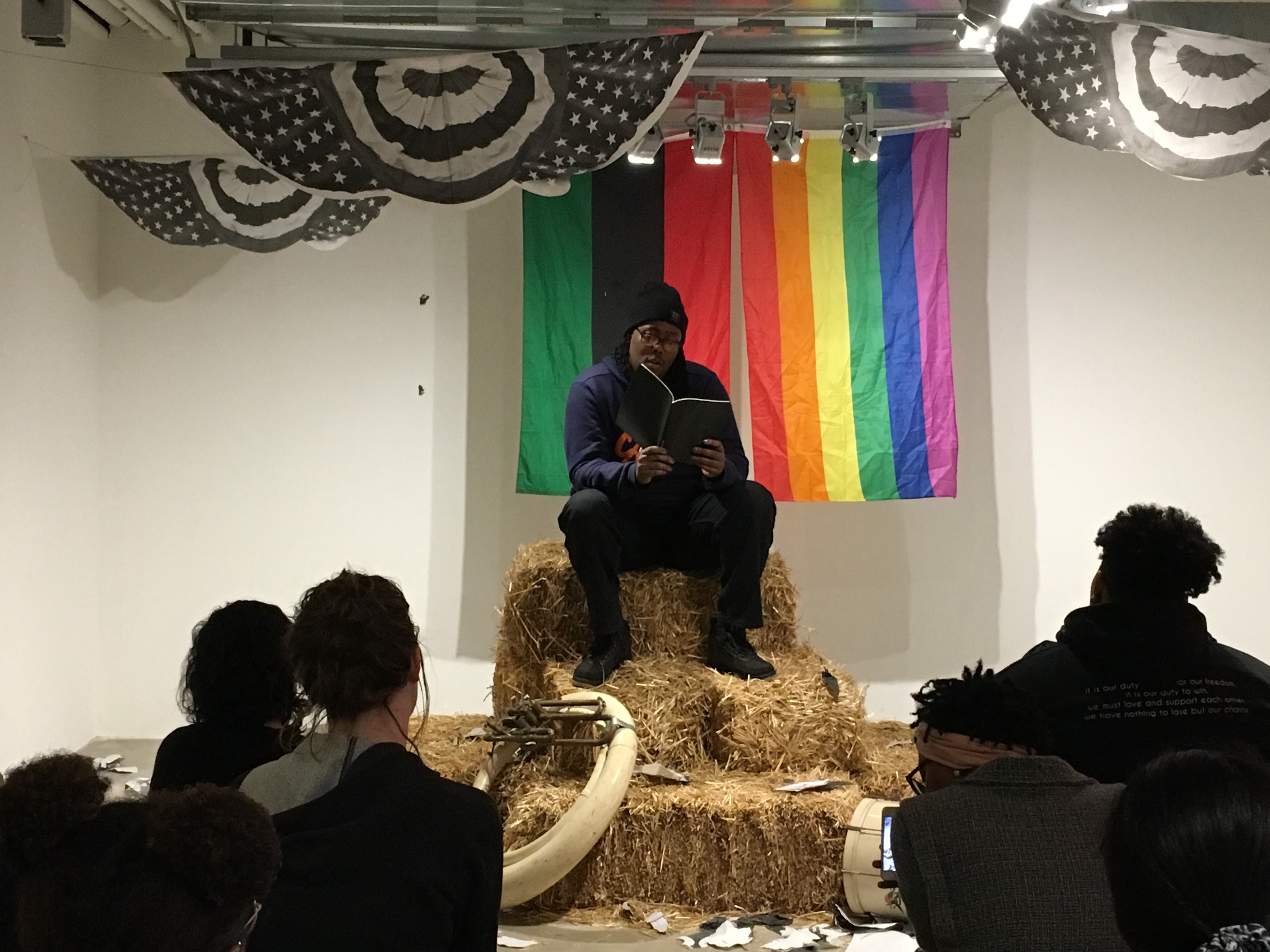
On May 1, 12:15 p.m. Darryl Terrell performed readings from his blkbycolored project. Drawing from traumatic personal experiences, Terrell unpacked issues of race and gender. Through a powerful account of domestic violence, school bullying, and a life-altering diagnosis, Terrell’s narrative to constructed a portrait of a queer, black artist represented here by the marriage of a pan African and LGBTQ flag.
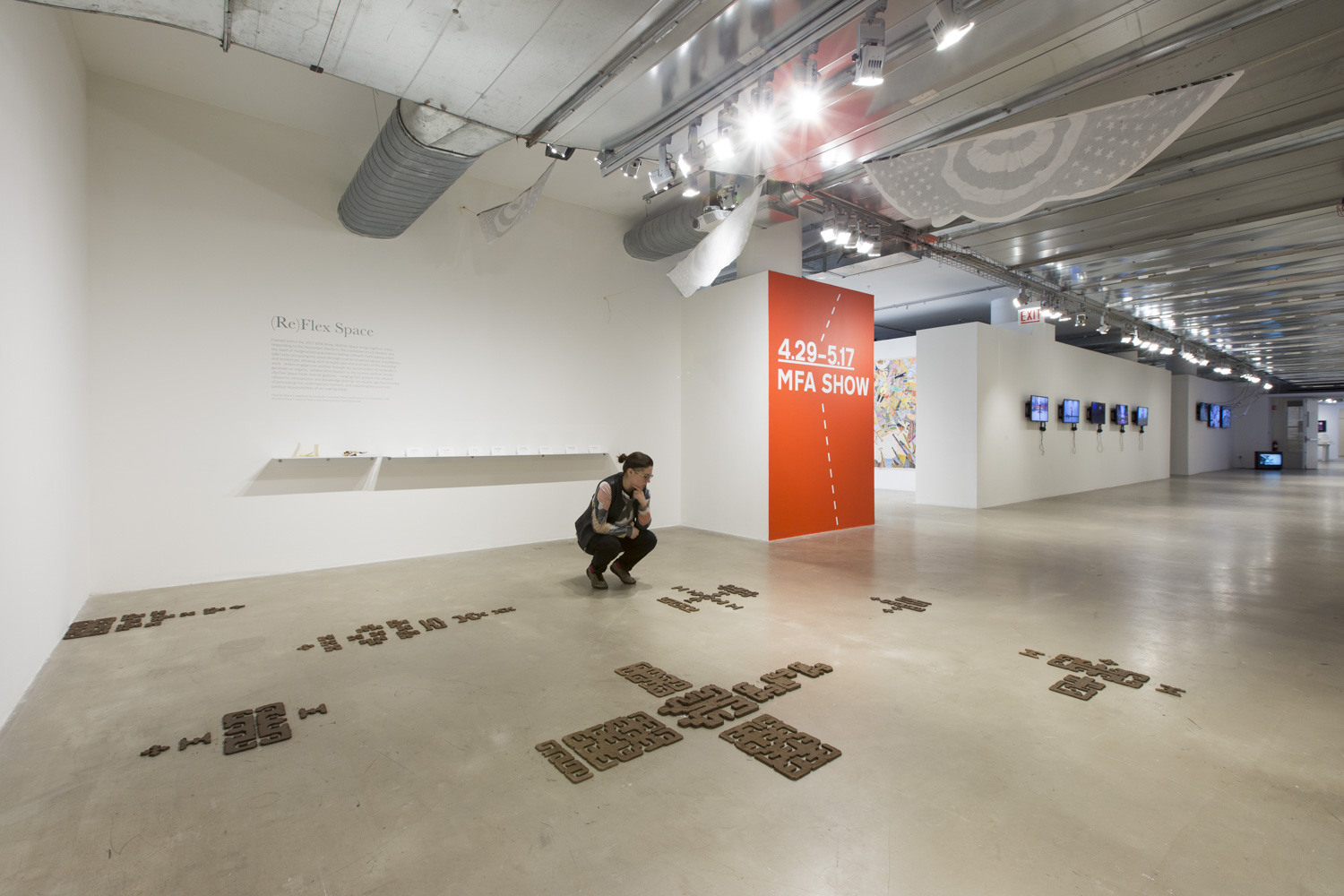
On the morning of May 3, Montiel began installing a series of stenciled soil works on the gallery floor. Informed by textile patterns from her native Mexico, Montiel’s earthen pieces evoke both ancient glyphs and every day objects through their labyrinthine formations. Montiel collected soil from locations correlating to Chicago’s cardinal points and mixed it with Nopal, a Mexican cactus juice, connecting her investment in her ancestral Mexican craft traditions to her life here in Chicago.

On May 3, at 4:15 p.m. Torres performed a dance in between and on top of Montiel’s soil stencils. Locating her body at the site of her artistic practice, Torres’s untrained dance privileged awkward, abrupt gesticulations that threatened and sometimes destroyed Montiel’s fragile works. Torres invited the audience to make sounds through looped recordings as the soundtrack to her dance. By democratically harnessing a multiplicity of voices, Torres’ performance investigated the contemporary Latinx body and its history of diaspora.
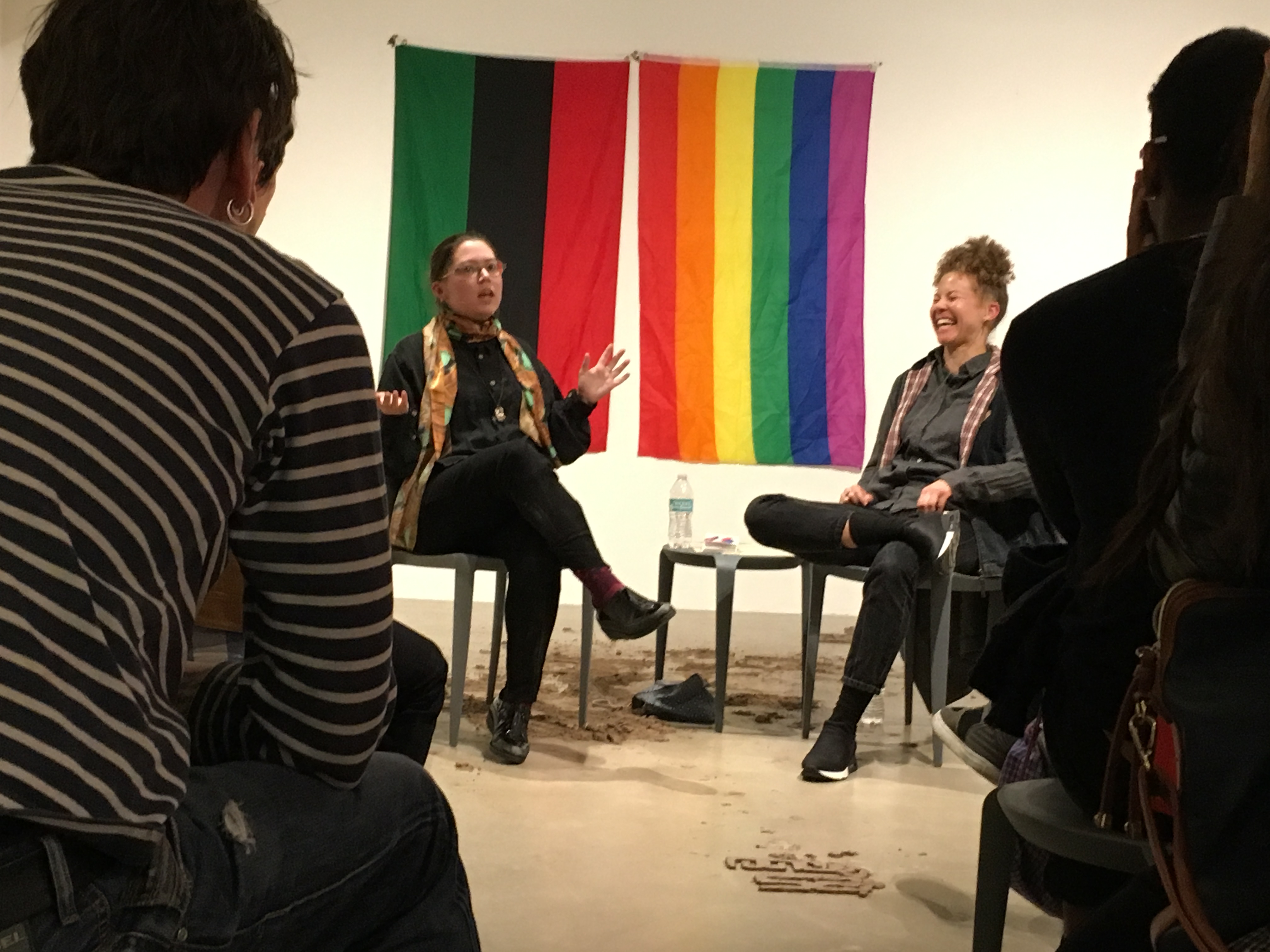
In the Afternoon of May 4, at 4:15 p.m. Luna engaged movement based performance artist, Anna Martine Whitehead, in conversation for an event titled Which ancestors do we run towards? Through personal accounts of their respective experiences being Latinx and Black while having a “white mother,” the two artists examined race as it relates to cultural production. Seated atop Montiel’s soil stencils disrupted by Torres’ dance, Luna and Whitehead negotiated holding the ancestral body within one’s form, being and artistic practice. The pair provided a library and reading list of formative literature that guided their conversation to remain in (Re)Flex Space.

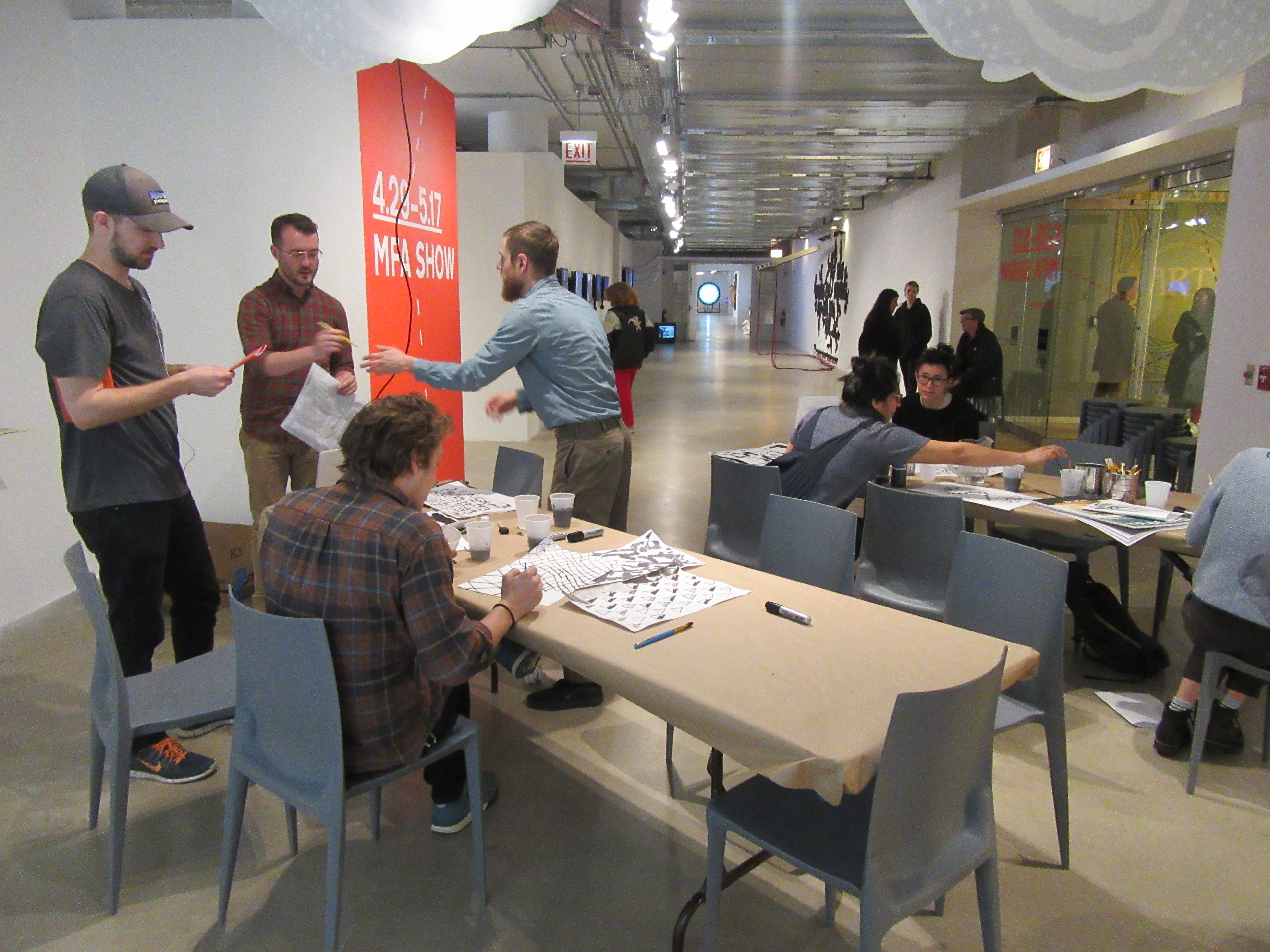

For three hours on May 10, DJ Stacy Shakes performed a live broadcast through SAIC’s radio station. The performance was live streamed to (Re)Flex Space where beanbag chairs provided by artist, Mary Ancel, allowed audiences to unwind while listening. Taking queues from warfare across the globe, DJ Stacy Shakes played an “A-pop-alyptic,” bomb-themed set.
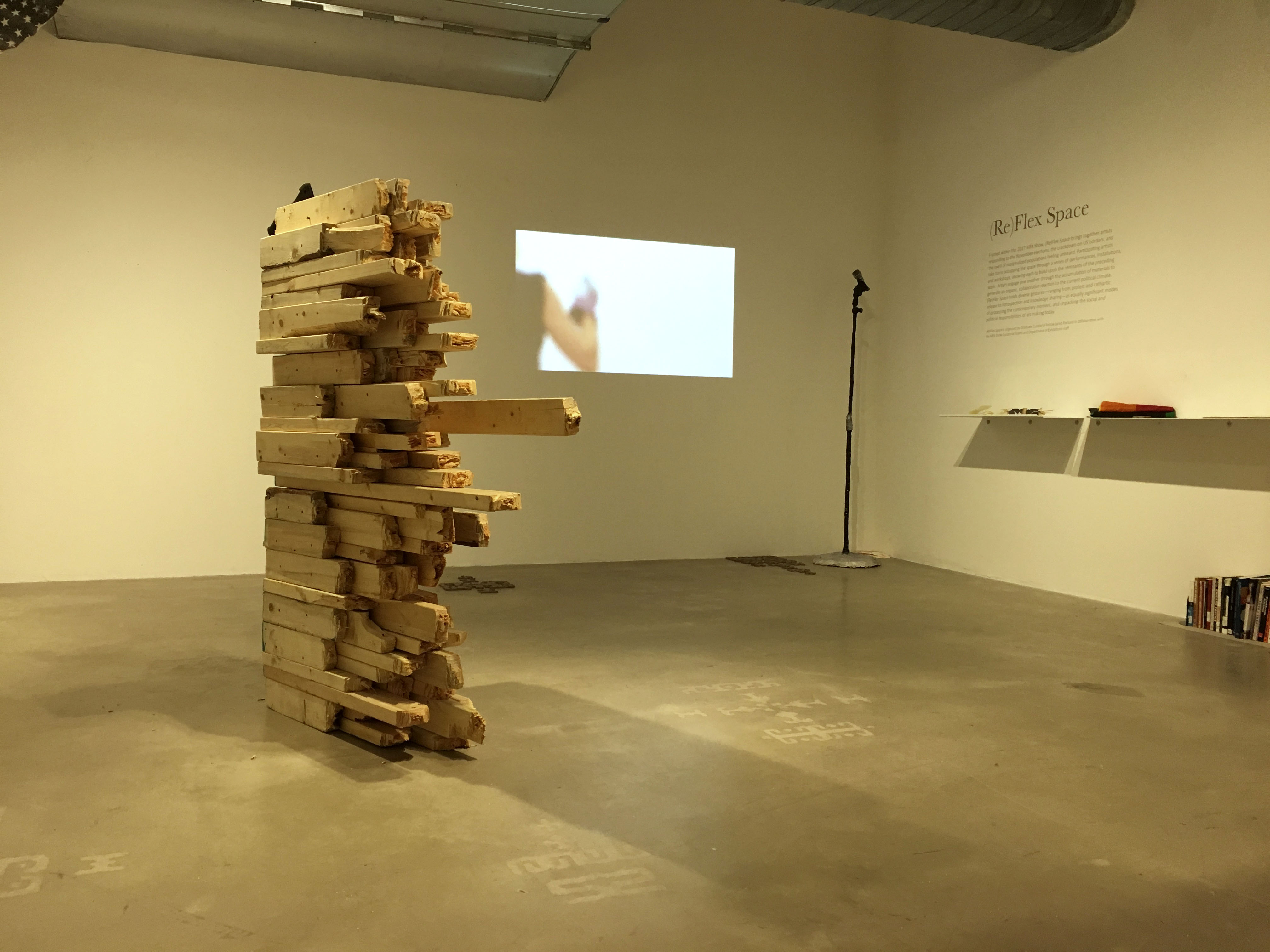
The day after Trump won the the elections last November, Surdell purchased a survival ax. She unleased her frustration and anger on lumber in flurry of cathartic rage. She stacked the wounded beams into dimensions that echoed her own body as physical manifestation of her pain and disappointment.
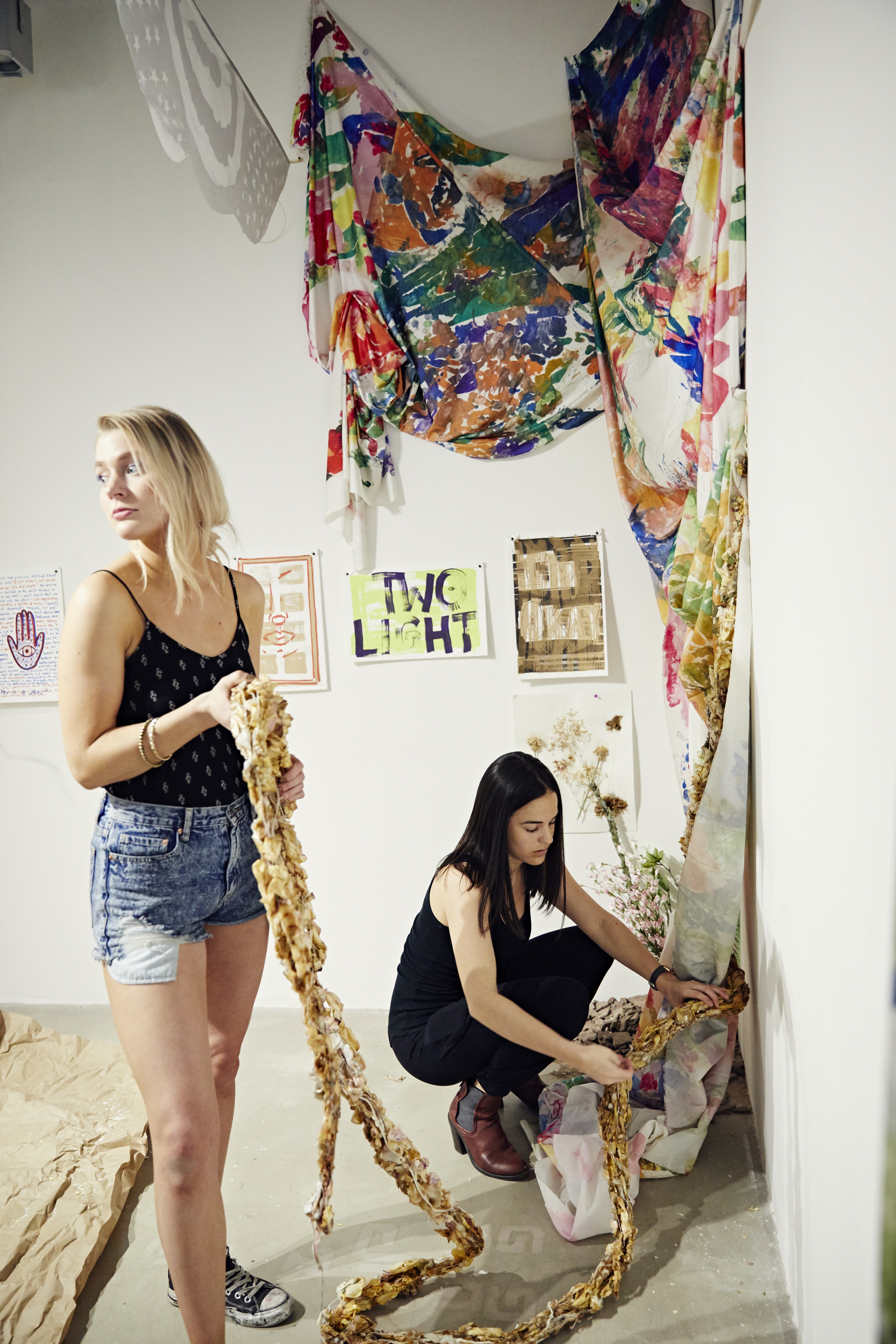
Embracing feminine tropes such as flowers and the color pink, Peyton-Levine and Rubenoff seek to elevate their subjects from a relegated status of beautiful yet trite and contentless. By adorning (Re)Flex Space with floral print fabrics as well as scraps tissue and flowers preserved in wax, this collaborative pair reclaim their voices as women and assert the potency of the feminine

